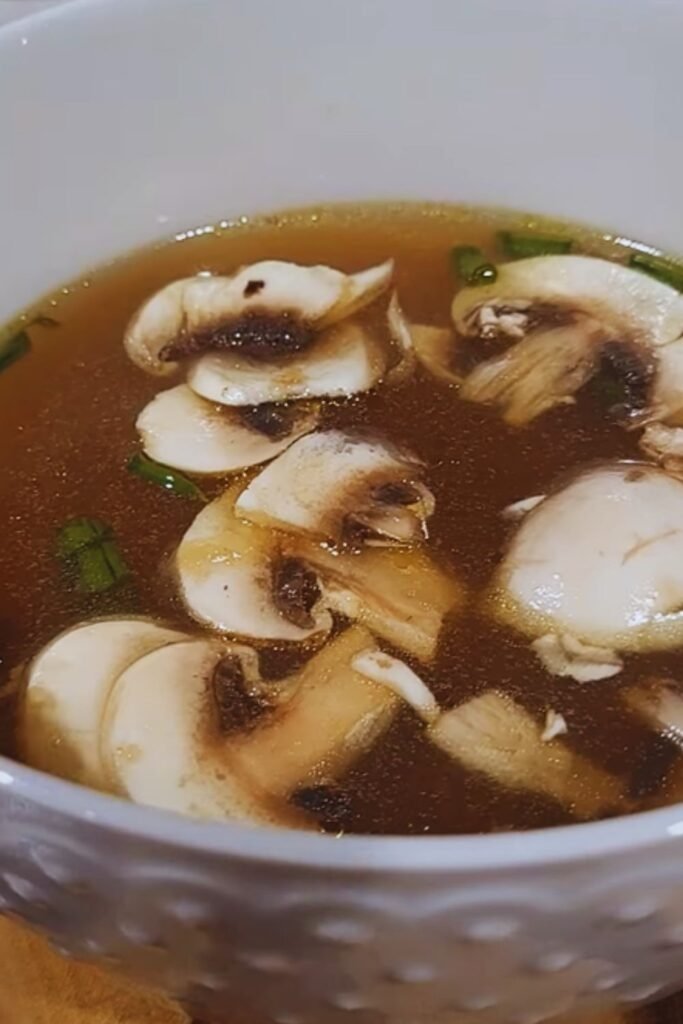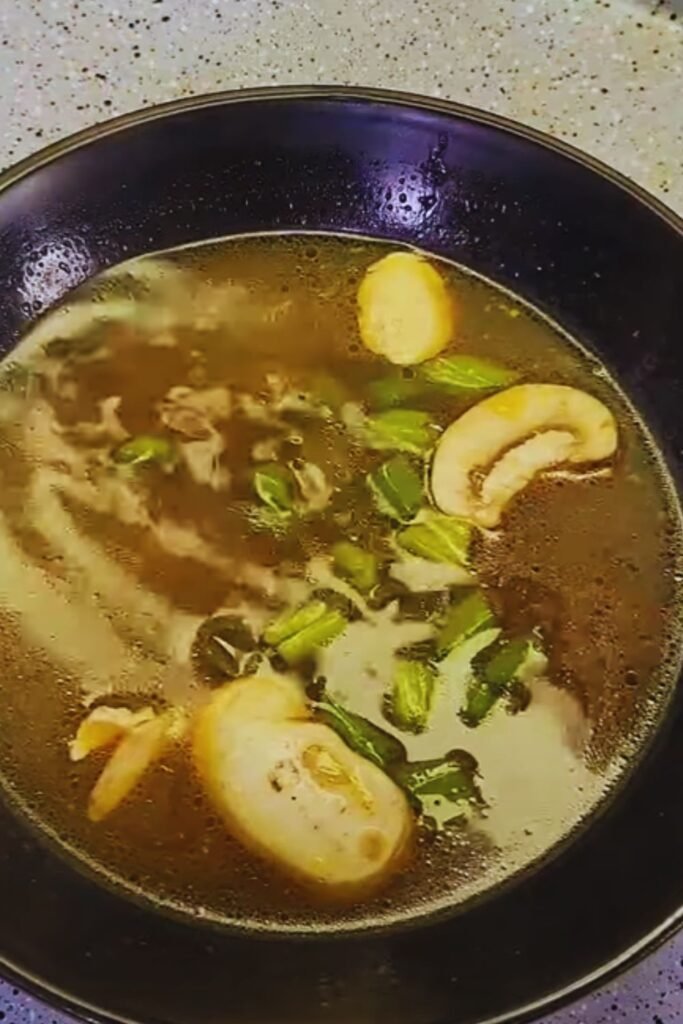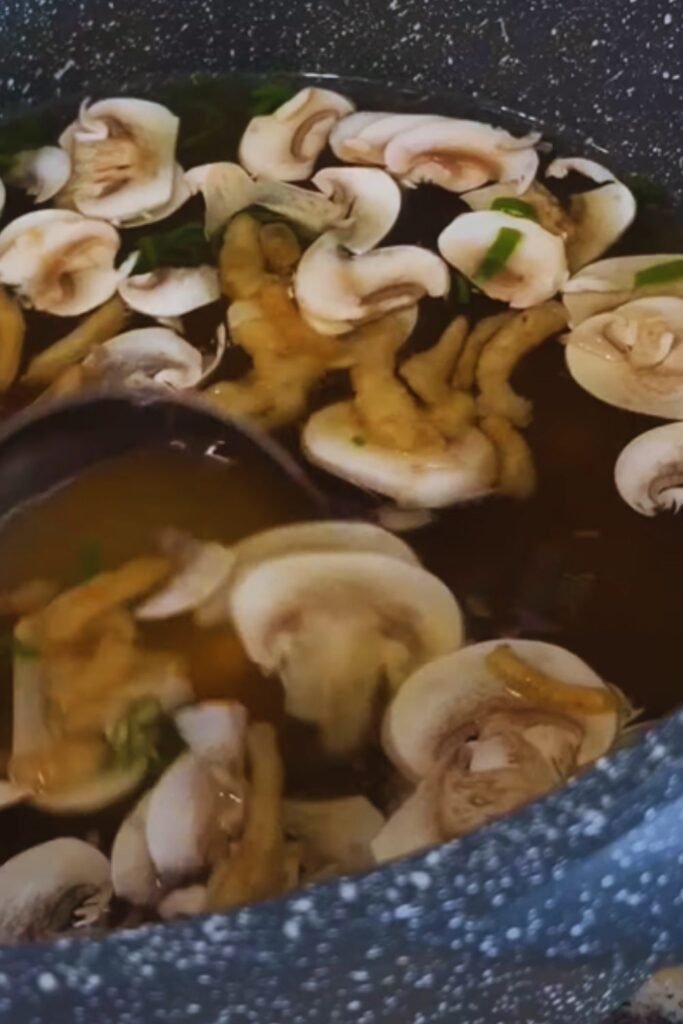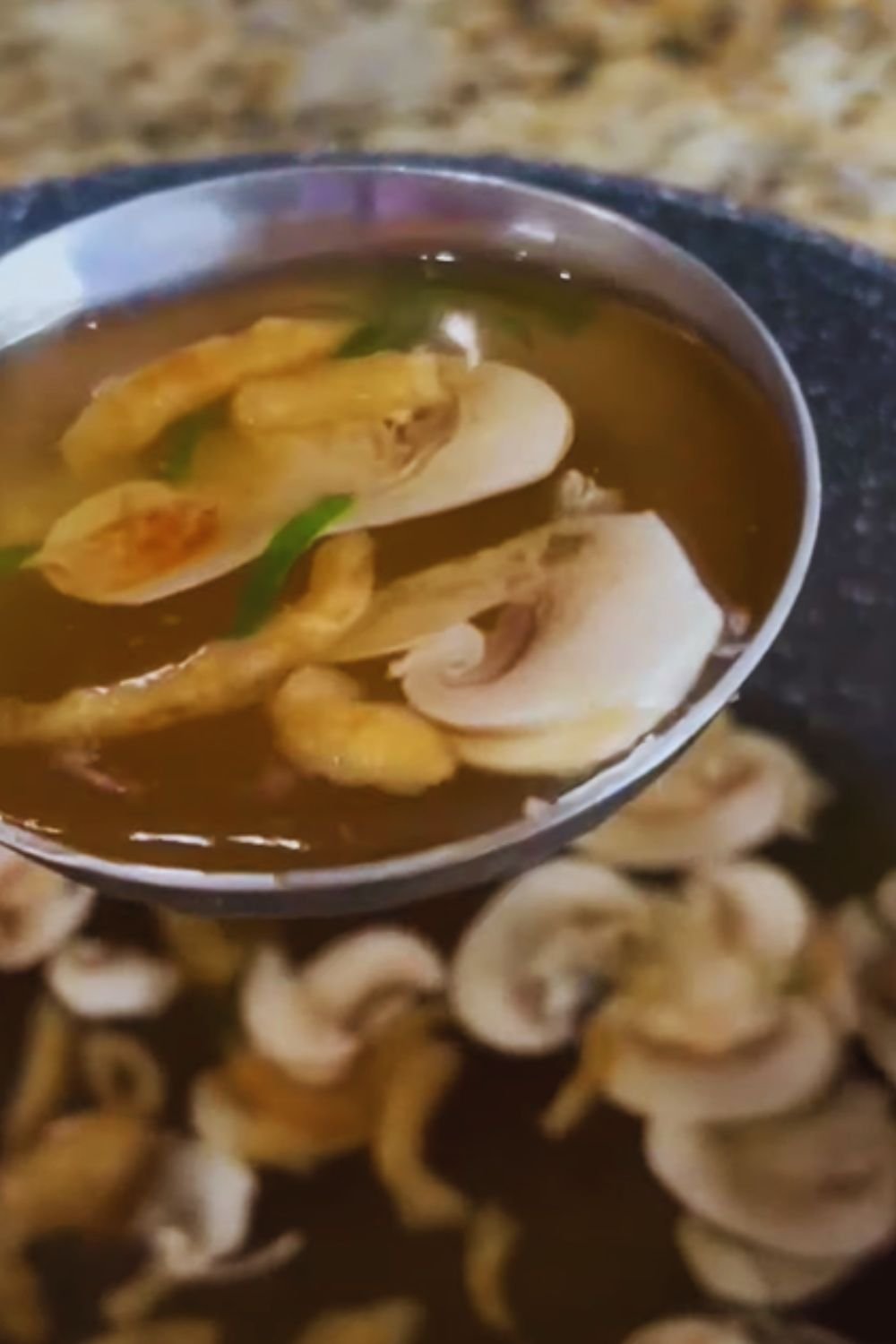As a recipe developer who’s spent years perfecting Japanese cuisine, I can tell you that there’s something truly magical about a perfectly prepared bowl of Japanese Clear Soup, or Suimono (すいもの). This delicate broth, with its crystal-clear appearance and subtle yet complex flavors, represents the essence of Japanese cooking philosophy – simplicity, purity, and attention to detail.
What is Japanese Clear Soup?
Japanese Clear Soup, known as Suimono in Japanese, is a light, transparent broth that’s considered one of the foundational elements of traditional Japanese cuisine. I’ve learned that while it may appear simple, achieving that perfect clarity while maintaining depth of flavor requires both technique and patience.

The Art of Clear Soup Making
In my experience, the key to perfect Suimono lies in three crucial elements:
- The Dashi Base
- The Clearing Technique
- The Garnish Selection
Essential Ingredients
- Primary Ingredients:
- Kombu (dried kelp)
- Katsuobushi (dried bonito flakes)
- Spring onions
- High-quality filtered water
- Mitsuba (Japanese parsley) or cilantro
- Light soy sauce (usukuchi shoyu)
- Sea salt
- Optional Additions:
- Small shrimp
- Tender fish slices
- Tofu cubes
- Seasonal vegetables
- Mushrooms (enoki or shiitake)
Detailed Recipe
Step 1: Preparing the Dashi Base
I always start with creating the perfect dashi, as it’s the foundation of our clear soup.
Ingredients for Dashi:
- 4 cups (1 liter) filtered water
- 1 piece kombu (4×6 inches/10×15 cm)
- 2 cups loosely packed katsuobushi
- 1/2 teaspoon light soy sauce
- 1/4 teaspoon sea salt

Instructions:
- Cold-steep the kombu in filtered water for 30 minutes
- Heat water until small bubbles appear
- Remove kombu just before water boils
- Add katsuobushi and turn off heat
- Let steep for 30 seconds
- Strain through a fine-mesh sieve lined with cheesecloth
Step 2: Clearing the Broth
This is where the magic happens. To achieve that crystal-clear appearance:
- Allow the strained broth to settle for 5 minutes
- Gently ladle the top portion into another pot
- Use an egg white clarification method if needed:
- Whisk one egg white with 1/4 cup cold water
- Add to barely simmering broth
- Let egg white collect impurities
- Strain through cheesecloth again
Step 3: Seasoning and Garnishing
For each serving (1 cup/240ml):
- Add 1/8 teaspoon light soy sauce
- Season with a pinch of sea salt
- Prepare garnishes:
- Slice green onions paper-thin
- Cut mitsuba into small sprigs
- Prepare any additional proteins or vegetables

Serving Suggestions
I love serving this soup in traditional lacquerware bowls, but any dark-colored bowl will help showcase the soup’s clarity. Some serving ideas:
- As a starter course before sushi or tempura
- Alongside a traditional Japanese breakfast
- As a light lunch with rice and pickles
- During cold weather as a warming course
Traditional Garnish Combinations
- Spring:
- Cherry blossom-shaped fish cake
- Young spring peas
- Tender bamboo shoots
- Summer:
- Okra slices
- Small shrimp
- Thin lemon zest
- Autumn:
- Matsutake mushroom
- Yuzu zest
- Mitsuba leaves
- Winter:
- Tofu cubes
- Napa cabbage
- Yuzu zest
Troubleshooting Tips
Based on my experience, here are solutions to common issues:
Cloudy Broth:
- Never boil the broth
- Strain multiple times if needed
- Use the egg white clarification method
- Let broth settle before serving
Weak Flavor:
- Extend kombu steeping time
- Adjust salt and soy sauce gradually
- Use fresh, high-quality ingredients
- Don’t over-dilute the dashi
Storage and Make-Ahead Tips
- The dashi base can be refrigerated for up to 3 days
- Store in a glass container with a tight lid
- Never reheat the entire batch; only heat what you’ll use
- Garnishes should be prepared just before serving
Health Benefits
Japanese Clear Soup offers several health benefits:
- Low in calories (approximately 20-30 calories per serving)
- Rich in minerals from the kombu
- Contains amino acids from katsuobushi
- Aids in digestion
- Hydrating and warming
- Natural immune system support
Q&A Section
Q: Why is my soup cloudy even after straining?
The key is gentle heating and proper straining technique. Never let the broth boil, and consider using the egg white clarification method for extra clarity.
Q: Can I make this soup vegetarian?
Yes! Skip the katsuobushi and use only kombu for the dashi. You can add dried shiitake mushrooms for extra umami flavor.
Q: How long can I store the prepared soup?
I recommend using it within 3 days when stored in the refrigerator. Always reheat gently to maintain clarity.
Q: What makes this soup different from other Japanese soups?
Unlike miso soup or ramen, Suimono is prized for its clarity and subtle flavors. It’s considered one of the most refined soups in Japanese cuisine.
Q: Can I add noodles to this soup?
While possible, traditional Suimono is typically served without noodles to maintain its light and clear characteristics.
Cultural Significance
In Japanese cuisine, clear soup represents purity and simplicity. It’s often served at formal occasions and traditional kaiseki meals. The soup’s clarity is seen as a reflection of the chef’s skill and attention to detail.
I’ve found that mastering this soup has taught me much about Japanese cooking principles: respect for ingredients, importance of technique, and the beauty of simplicity. Each bowl of clear soup is an opportunity to create something that’s both visually stunning and deeply satisfying.
Remember, the key to perfect Japanese Clear Soup lies not just in the recipe, but in the care and attention you bring to each step of the process. Take your time, focus on quality ingredients, and enjoy the meditative process of creating this beautiful dish.


